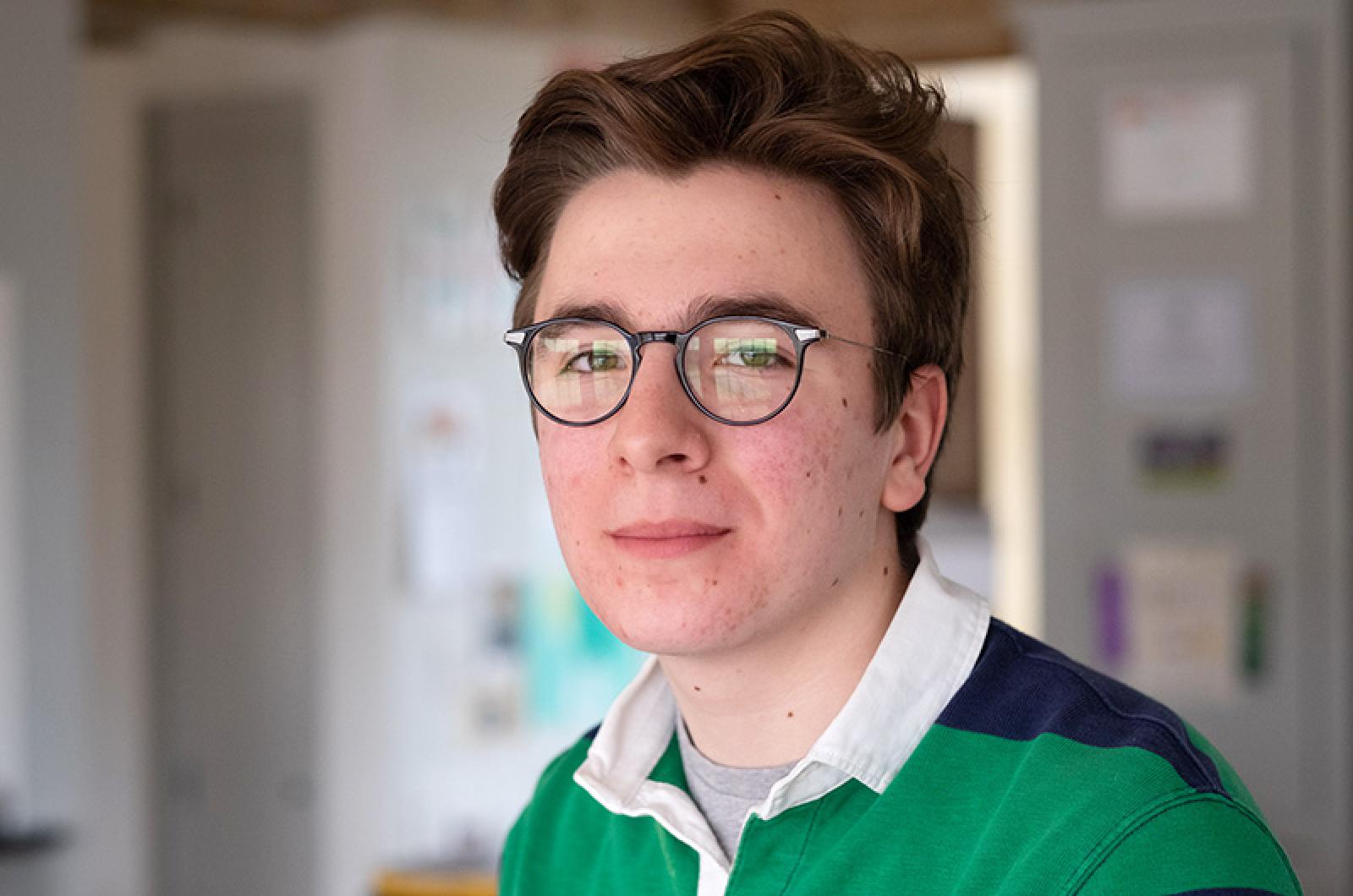The Falmouth Academy science fair loomed, just a couple of months away, and 16-year-old Noah Glasgow’s project was in serious jeopardy. Experiments weren’t going anywhere and the methodology he developed appeared to be misguided. But instead of succumbing to the pressure, Noah met with his mentor, former Wood’s Hole Oceanographic Institute scientist Dr. Mike Mazzotta, and redid the entire project.
“We picked a different way of doing the same thing, went back and boom, results,” Noah said.
The hard work paid off. The Falmouth Academy sophomore and Chilmark resident won the school science fair and then went on to win the South Shore Regional Science Fair. In May he will participate in the Intel International Science and Engineering Fair in Phoenix, Ariz. alongside 1,700 students from 70 countries. That same month he will compete in the Massachusetts State Science and Engineering Fair held at MIT.
The title of the project is The Acidifying Ocean’s Effect on Protease Activity in Alteromonas. For those unfamiliar with most of those words, Noah is happy to break it down. Due to the use of fossil fuels around the world, and the subsequent increase in carbon dioxide, the levels of pH in the oceans have decreased causing acifidication. The goal of Noah’s experiment was to discover how an acidifying ocean impacts alteromonas, a microscopic decomposing bacteria that helps break down carbon build up.
“It would be like if we lost decomposing organisms that break down trees,” he said. “If it can’t effectively do its job, you’ll see carbon build up in certain environments, which can increase the damage of ocean acidification.”
He said what he discovered countered his original theory — that the alteromonas would suffer from lowering pH levels in the ocean. It turned out they actually thrive in it.
“The low pH was allowing proteas to function optimally, better than their natural environment,” he said. “As the pH gets lower and lower, the organism shifts its metabolism. It would be like if all of a sudden you twisted the chemistry of our stomachs.”
The unexpected results have made Noah even more curious about how lowering pH is linked to bacteria, and he said the next step is to expand the experiment to other organisms to find potential ecological ways to reverse the acidification trend.
“It’s like we were doing an archaeological dig and we hit the top of the treasure chest. Now we have to scrape away the sand and figure out what’s actually going on in there.”
Noah praised the teachers and scientists who helped assist him in the project and gave him the freedom to conduct his experiments in top-tier labs at the Woods Hole Oceanographic Institute.
“The only thing I couldn’t do was handle toxic chemicals,” he said. “Otherwise, all of the actual research was done in the lab by these two hands, covered in latex gloves of course.”
Noah may also be the most stylish young scientist at the competitions. Last year he created a website and Instagram account where he offered tips on men’s fashion. He even has a good luck cardigan.
“I’m a big fashion guy,” he said. “I’ve worn the same thing to every science fair this year. I have it down to a science.”
He said that if a science career doesn’t work out, helping scientists add some chic to their wardrobe could be an alternate calling.
“Everyone in the lab has a very distinct way of dressing,” he said. “Some are the bowtie scientists and some are the Patagonia or L.L. Bean scientists. I love it.”
For now, Noah said he is thrilled to continue his research and have the opportunity to represent his school and the Island at the largest student science event in the world.
“Science fair was never something I was exposed to until I started Falmouth Academy,” he said. “It’s been a really incredible process to learn what it’s like to experience the collaborative energy of a top tier research environment. I just love science, and it’s fun to present.”





Comments (13)
Comments
Comment policy »